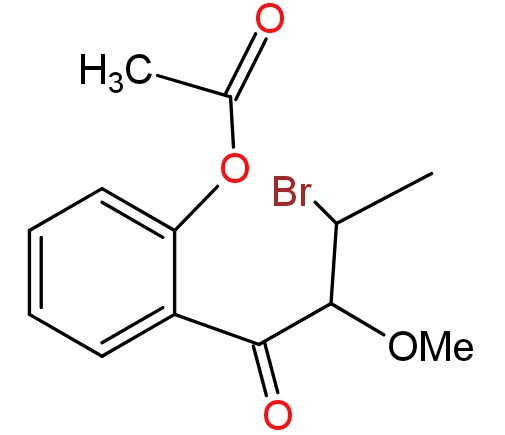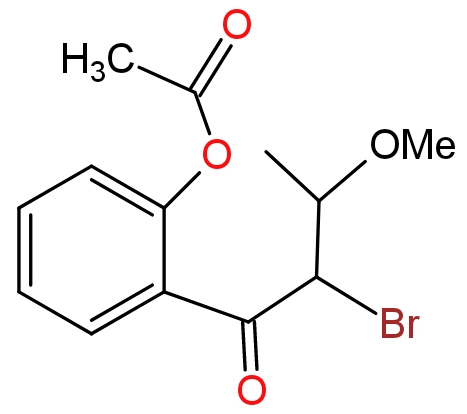Answer
397.2k+ views
Hint This reaction is an example of both electrophilic and nucleophilic addition reaction. Alkene is an electron rich centre which mainly shows electrophilic addition reaction.
Complete Step by step solution :
This reaction is completed into two steps - In the first step bromine acts as an electrophile and attacks the double bond of the substrate compound. In the approach of bromine double bond migrates toward the electrophile and electrophilic gets attached to the double bond. Since bromine has lone pairs of electrons, it will donate the lone pair to the other carbon which has positive charge and forms a cyclic halonium ion as an intermediate.

In the second step- methyl alcohol which is present in the form of solvent acts as a nucleophile and attacks the electron deficient carbon atom. Due to formation of cyclic halonium ion anti-addition of methyl alcohol takes place. To compensate the positive charge in oxonium ion it loses its hydrogen atom which will be accepted by bromide ion present in the solution.
Note: Br-Br bond is generally a non- polar bond but when it approaches the alkene(double bond or an electron rich centre) of the complex compound it gets polarised and gets induced charge on the bromine atom which acts as an electrophile.
-Due to the formation of cyclic halonium ions there is no re-arrangement of charge.
-Anti -addition of alcoholic grope takes place because cyclic halonium ion prevents the nucleophile from attacking from the same side.
Complete Step by step solution :
This reaction is completed into two steps - In the first step bromine acts as an electrophile and attacks the double bond of the substrate compound. In the approach of bromine double bond migrates toward the electrophile and electrophilic gets attached to the double bond. Since bromine has lone pairs of electrons, it will donate the lone pair to the other carbon which has positive charge and forms a cyclic halonium ion as an intermediate.

In the second step- methyl alcohol which is present in the form of solvent acts as a nucleophile and attacks the electron deficient carbon atom. Due to formation of cyclic halonium ion anti-addition of methyl alcohol takes place. To compensate the positive charge in oxonium ion it loses its hydrogen atom which will be accepted by bromide ion present in the solution.
Note: Br-Br bond is generally a non- polar bond but when it approaches the alkene(double bond or an electron rich centre) of the complex compound it gets polarised and gets induced charge on the bromine atom which acts as an electrophile.
-Due to the formation of cyclic halonium ions there is no re-arrangement of charge.
-Anti -addition of alcoholic grope takes place because cyclic halonium ion prevents the nucleophile from attacking from the same side.
Recently Updated Pages
How many sigma and pi bonds are present in HCequiv class 11 chemistry CBSE

Why Are Noble Gases NonReactive class 11 chemistry CBSE

Let X and Y be the sets of all positive divisors of class 11 maths CBSE

Let x and y be 2 real numbers which satisfy the equations class 11 maths CBSE

Let x 4log 2sqrt 9k 1 + 7 and y dfrac132log 2sqrt5 class 11 maths CBSE

Let x22ax+b20 and x22bx+a20 be two equations Then the class 11 maths CBSE

Trending doubts
Fill the blanks with the suitable prepositions 1 The class 9 english CBSE

At which age domestication of animals started A Neolithic class 11 social science CBSE

Which are the Top 10 Largest Countries of the World?

Give 10 examples for herbs , shrubs , climbers , creepers

Difference between Prokaryotic cell and Eukaryotic class 11 biology CBSE

Difference Between Plant Cell and Animal Cell

Write a letter to the principal requesting him to grant class 10 english CBSE

Change the following sentences into negative and interrogative class 10 english CBSE

Fill in the blanks A 1 lakh ten thousand B 1 million class 9 maths CBSE








